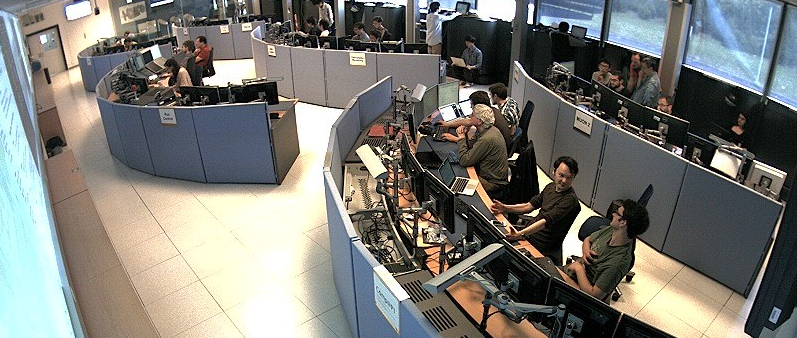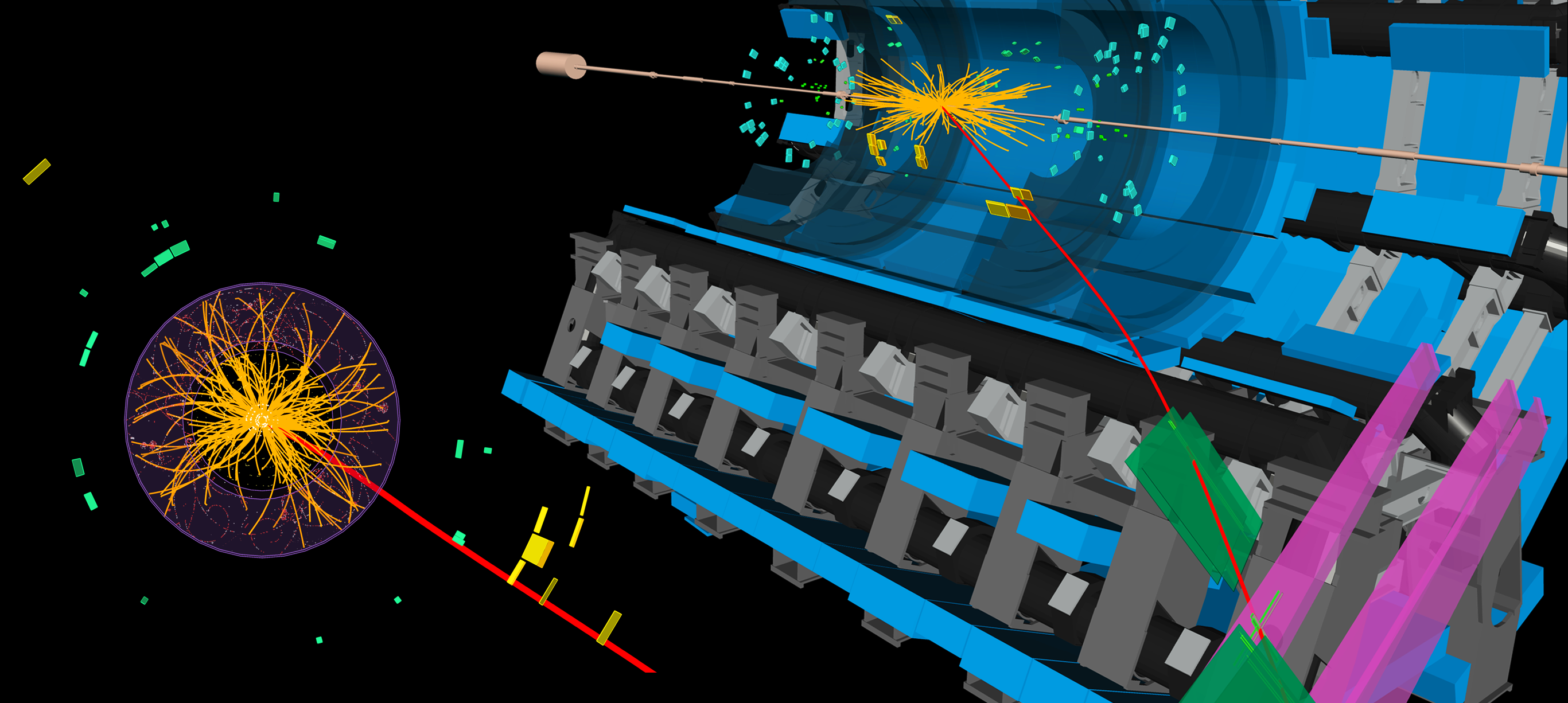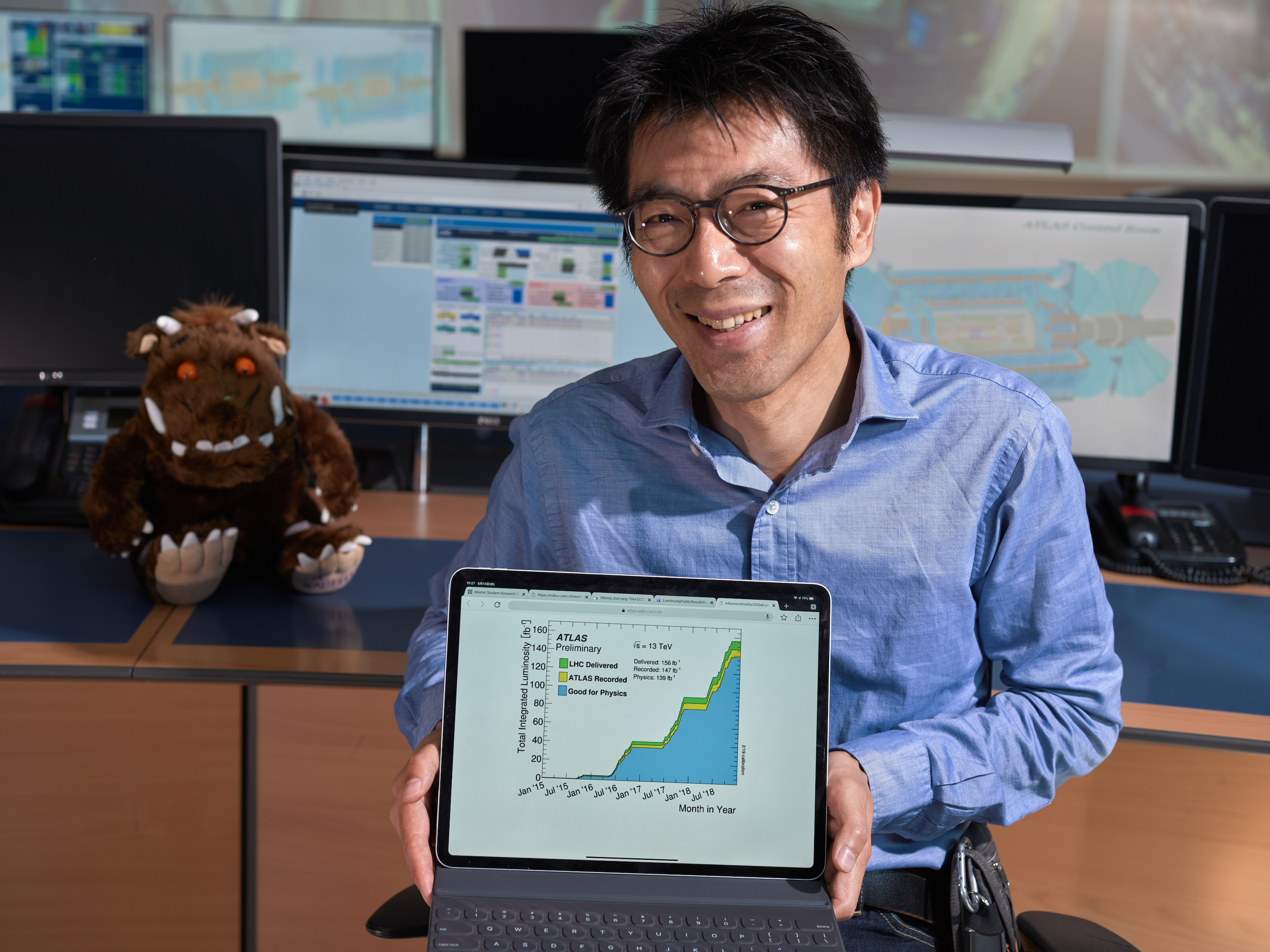The Symphony of ATLAS
23 June 2014 | By

Bringing the nine-storey high, many-layered ATLAS detector back to life and preparing it for the Large Hadron Collider's next run is a complex task. Each sub-detector is setup and thoroughly tested before they are joined and the detector as a whole can begin recording data again.
"It is a bit like an orchestra: the different instruments practice on their own, then we bring them together one by one. You need to tune and get them in the best shape possible first, only then can the ensemble work," says Alessandro Polini, ATLAS Run Coordinator.
Integrating the sub-systems is done in staggered steps that the ATLAS collaboration calls Milestone Weeks. Teams working on the different sub-systems come together to operate as a combined system and address any problems that appear before the next step takes place.
There are six Milestone Weeks interspersed throughout this year with the seventh and final Milestone Week scheduled at the end of November. But how is a general-purpose particle physics detector tested for high energy collisions when there are no particle collisions taking place?
"Cosmic rays," says Polini. Cosmic ray particles are bombarding us all the time. We don't feel them, however they are registered as tracks in the ATLAS detector systems. If there are gaps or certain tracks aren't aligned at specific points, there is more work to be done.
"It is a bit like an orchestra: the different instruments practice on their own, then we bring them together one by one," says Alessandro Polini.
ATLAS already took a vast amount of data during the first run from 2010 to 2013, allowing for the discovery of the Higgs boson and many other results. In the second run, bunches of protons will be accelerated to nearly twice the energy and timed to collide every 25 nanoseconds in the ATLAS detector. This means up to 40 million collisions per second, two times more than during the previous run.
After the cosmic runs, still more tests will be done. Beam splashes, where a proton bunch is sent through the LHC to a closed collimator. The reaction of the beam with the material of the collimator causes a spray of particles that illuminate the whole detector, which can be used to test the detectors' time alignment internally and with respect to the beams. During the LHC's runs, the detector is further aligned and calibrated using the data from the proton collisions.
Three Milestone Weeks have already taken place. In the first, the trigger and data acquisition system, which selects and reconstructs interesting physics events, was tested from the detector electronic readout system to the online storage discs. The muon spectrometer, which forms the outer shell of the detector and is responsible for detecting muons produced in the collisions, also already took part in this step.
In the second Milestone Week, the Transition Radiation Tracker was added together with the beam control and monitoring system. The possibility of actively selecting cosmic ray muons passing through the detector with the muon spectrometer came in the third Milestone Week, allowing for much more efficient testing. The calorimeters will come next, together with the silicon detectors, which are closest to the interaction point. A new layer of silicon detectors, called the Insertable B-Layer, has been installed even closer to the interaction point during this shutdown. It will also be integrated in the fourth Milestone Week scheduled for 7 July.
"There are four more Milestone Weeks left. We will have the final rehearsal in November with an extended cosmic ray run when all the layers will come together and the magnetic fields will be turned on," says Polini, "ATLAS will then be ready for its symphony."


